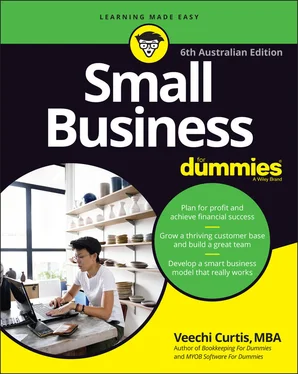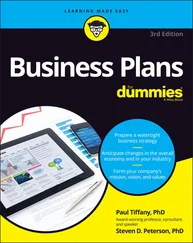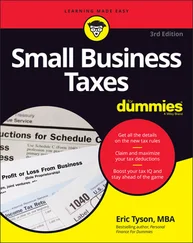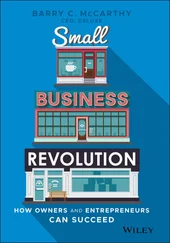A service business that relies heavily on an owner’s specialist skills may receive a lower EBIT, due to the fact that the owner’s skills are hard to replicate.
If the profitability of a business is growing, and the owner can prove sustained growth trends, the owner may well ask for a higher EBIT.
 If your accountant lacks experience in valuing businesses, I suggest you seek the services of a business valuation expert.
If your accountant lacks experience in valuing businesses, I suggest you seek the services of a business valuation expert.
The capitalised earnings method
This approach to valuing a business provides another way to skin the same cat, and is called the capitalised earnings method. This method is more commonly used by the buyer rather than the seller, because the final valuation is so reliant on the rate of return that the buyer requires.
Here’s how it goes:
1 Work out the EBITDA.Sounds like I’m rapping. But no, I’m actually talking about Earnings Before Interest and Tax, Depreciation and Amortisation. I explain this calculation in the section ‘ Calculating the ‘True’ Earnings of a Business’, earlier in this chapter.
2 Decide what you want as your rate of return.This figure is usually how much you’d get from the current bank deposit rate plus an allowance for the risk you’re taking. For example, if the deposit rate is 2 per cent, you may want to add another 8 per cent for the risk you’re taking, and so decide to aim for 10 per cent as your rate of return. (My example here reflects the rates at time of writing, which are historically low. Of course, deposit rates may have changed by the time you’re reading this.)
3 Divide the EBITDA by your desired rate of return.The result of this calculation is called capitalised earnings . For example, if the average EBITDA of a business is $50,000 and you want a return of 10 per cent, capitalised earnings would be $500,000. Or, if you want a return of 15 per cent because your perceived risk is higher, capitalised earnings would be $333,333. This capitalised earnings figure represents how much the business is worth in your eyes, given the rate of return that you’re seeking. As the examples show, the business valuation goes down as the risk (and so required rate of return) goes up.
 I mention wages earlier in this chapter, but don’t forget to adjust the EBITDA to allow for the time owners spend working on the business. This adjustment is particularly important when looking to buy a sole trader or partnership business, because the financials will not include wages paid to owners. For example, a business may look great on paper, showing average profits of $100,000 per year, but if this business is run by a couple who each work 60 hours per week, these profits are not really profits at all.
I mention wages earlier in this chapter, but don’t forget to adjust the EBITDA to allow for the time owners spend working on the business. This adjustment is particularly important when looking to buy a sole trader or partnership business, because the financials will not include wages paid to owners. For example, a business may look great on paper, showing average profits of $100,000 per year, but if this business is run by a couple who each work 60 hours per week, these profits are not really profits at all.
The strategic advantage method
Sometimes a business sells for way more than it would be worth if it were valued by traditional methods, because it possesses some kind of strategic advantage that the buyer can leverage to great success. For example, a major player in a particular market may be happy to pay big bucks for one of the smaller fish in the pond because they want to get their hands on a particular advantage such as a unique business model, a great domain name or a smart bit of software.
Dotting Your I’s, Crossing Your T’s
Here’s a summary checklist to work through when you’re thinking of buying a business. Of course, I’m assuming that you already have a lawyer on the case (if you don’t, get one now!), and your accountant has checked the financials.
A is for accountant: Involve your accountant from early on. Ask your accountant to help you put a value on the goodwill and to look through financial statements with a fine-toothed comb.
B is for Balance Sheet: Pay particular attention to the book value of assets and liabilities.
C is for creditors: Make sure the contract includes a statement that any money owed to creditors is the previous owner’s responsibility, not yours. If the business receives deposits from customers in advance, remember to include details about who owns the liability of security deposits in the contract.
D is for debtors: Clarify whether any money owed to the business from customers is owed to you, or to the previous owner. If the money is owed to you, detail the total value in the contract, and make an allowance for bad debts. In addition, ask for an aged debtors listing (that is, a listing of outstanding customer debts, grouped according to how old each debt is). The longer an invoice has been outstanding, the less willing you should be to take it on.
E is for employees: Determine whether existing staff are going to stick around (ideally, you want to have flexibility over the decision whether they do or don’t). You also need a list of all employees, including relevant awards, hours worked and hourly rates, holiday, personal leave and long service leave due, and superannuation, and ensure the purchase price is adjusted downwards for all employee leave liabilities. Find out when these employees last had a pay rise, and whether another pay increase is likely.
F is for family: Beware the family business where the extended family all pitches in, sometimes for minimal pay. When deciding how much you’re prepared to pay for a business, adjust the value to incorporate enough wages to cover all of these hours.
G is for guarantee: Try to include a clause saying that the contract can be revoked if any of the information included in the contract, or supplied with the contract, isn’t right. Some contracts even require 10 per cent of the sale price to be held in trust for a period of six months or so, and only released if all conditions are met.
H is for help! Consider whether you want the seller to work alongside you for an initial period so you can learn how everything works. If you do, detail for how long and under what conditions.
I is for inventory: Agree on the method of valuing stock and clarify what stock items you’re willing to pay for (refer to the section ‘ Clarifying what the purchase price includes’, earlier in this chapter, for details).
J is for job description: Do existing employees already have job descriptions? If so, ask for copies.
K is for knowledge: The knowledge held within a business often represents a significant intangible asset. Ensure the previous owner provides you with written procedures for core business activities. If these procedures don’t exist, negotiate to have them written.
L is for legals and leases: Chances are buying a business is one of the most significant financial decisions you’re ever likely to make, and quality legal advice forms a vital part of your protection. Oh yes, L is also for leases: Identify any current leases for fixed assets or for rental premises, and when these leases expire. For retail businesses, ask yourself if the lease weren’t renewed, would you still have a viable business?
M is for maintenance: Is the equipment well-maintained or has it been run down?
N is for names: Make sure the business name (as well as any associated domain names, patents, permits, registrations or trademarks) is signed over to you.
O is for ownership: Make sure that nobody other than the owner has legal rights to the assets. This ownership status is particularly important in regard to any intellectual property or leased items.
Читать дальше

 If your accountant lacks experience in valuing businesses, I suggest you seek the services of a business valuation expert.
If your accountant lacks experience in valuing businesses, I suggest you seek the services of a business valuation expert. I mention wages earlier in this chapter, but don’t forget to adjust the EBITDA to allow for the time owners spend working on the business. This adjustment is particularly important when looking to buy a sole trader or partnership business, because the financials will not include wages paid to owners. For example, a business may look great on paper, showing average profits of $100,000 per year, but if this business is run by a couple who each work 60 hours per week, these profits are not really profits at all.
I mention wages earlier in this chapter, but don’t forget to adjust the EBITDA to allow for the time owners spend working on the business. This adjustment is particularly important when looking to buy a sole trader or partnership business, because the financials will not include wages paid to owners. For example, a business may look great on paper, showing average profits of $100,000 per year, but if this business is run by a couple who each work 60 hours per week, these profits are not really profits at all.










